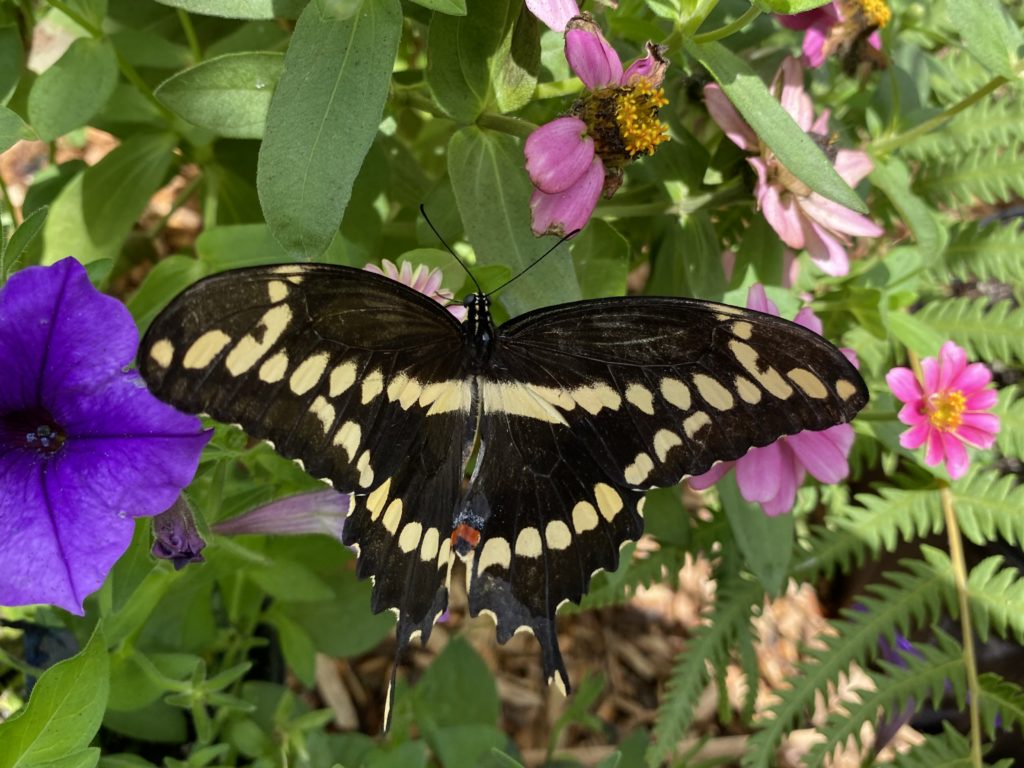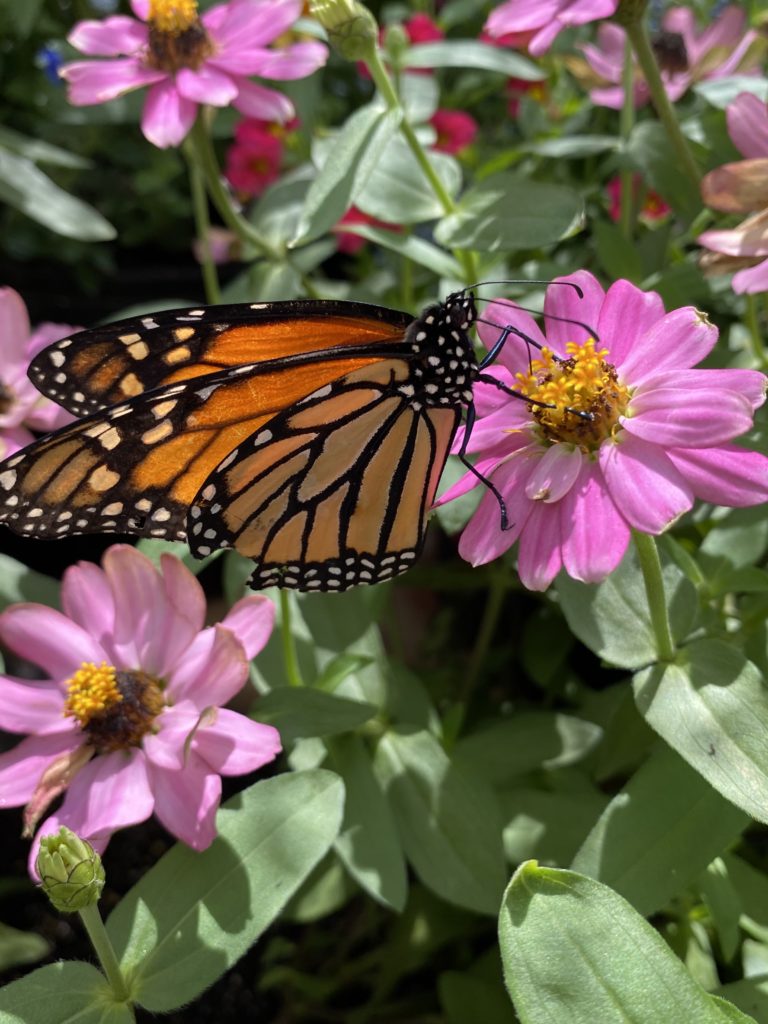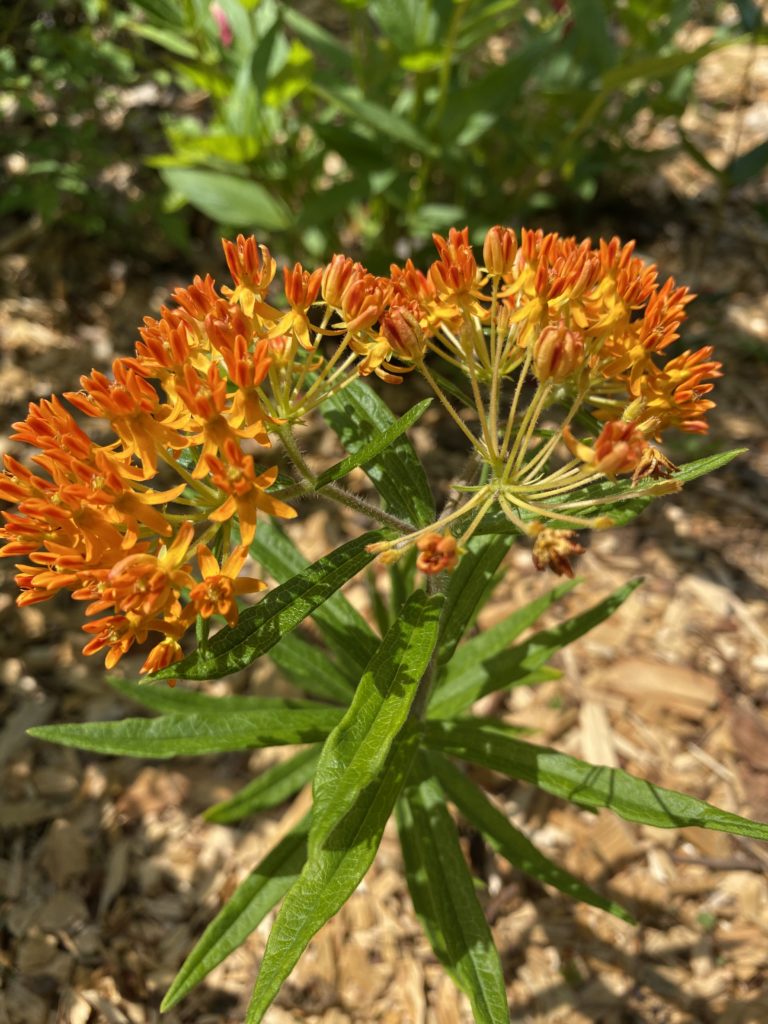Tips for Starting a Successful Butterfly Garden
Always include a nectar source and host plants
March 16, 2021

There are two parts to any successful butterfly garden: nectar sources and host plants. Nectar is an important source of food for many pollinators, and luckily there are many different types of annuals and perennials that provide this resource.
To attract native pollinators to your garden, we recommend planting native annuals and perennials that would typically be found in your area naturally. Butterflies see in ultraviolet light, so bright colored flowers with a lighter center can act as a target to help attract pollinators. Butterflies also prefer a space to land while feeding on the nectar, so native species with larger petals or petals that form in clumps will also help attract butterflies to your garden.
The National Wildlife Federation provides these additional tips when selecting nectar plants:

- Plant good nectar sources in the sun
- Select a variety of plants to promote continuous bloom throughout the season
- Say no to insecticides! Insecticides are lethal to butterflies while they are still caterpillars.
Here is a short list of nectar sources that have been used in our Butterfly Encounter at CNC throughout the years.
Annuals: Lantana ‘New Gold’, Petunia ‘Wave White’, Calibrachoa ‘Blue Legend’, Zinnia ‘Profusion’, Verbena ‘Vepita Dark Red’, Plumbago
Perennials: Gaillardia pulchella, Indian Blanket, Coreopsis sp., Tickseed, Stokesia laevis, Stokes aster, Pycnanthemum sp., Mountain mints

The second item necessary for a successful butterfly garden are host plants. Host plants are required for a butterfly’s reproductive cycle.
When a caterpillar hatches from its egg, it must eat from a specific plant to survive. If an egg is laid on a plant that is not the correct host plant, the caterpillar will hatch, try to eat whatever plant they are on, and then die. Therefore, if you would like to attract a wide variety of native butterflies to your garden, be sure to plant a wide variety of native host plants!
Below, you can find the list of host plants to some of the native butterflies of Georgia.
Butterfly: Danaus plexippus, Monarch
Host Plant: Asclepias incarnata
Butterfly: Papilio polyxenes, Black Swallowtail
Host Plants: Variety of plants in the Apiaceae family including: Carrots, Dill, Parsley, Fennel, Celery, Caraway
Butterfly: Papilio cresphontes, Giant Swallowtail
Host Plants: Variety of trees and herbs in Rutaceae family including: Prickly Ash, Hop Tree, Common Rue
Butterfly: Battus philenor, Pipevine Swallowtail
Host Plant: Pipevines (Aristolochia species)
Butterfly: Papilio troilus, Spicebush Swallowtail
Host Plant: Plants belonging to Lauraceae family
Butterfly: Papilio glaucus, Eastern Tiger Swallowtail
Host Plant: Common host plants in Magnoliaceae and Rosaceae families including: Tulip Tree, Sweet Bay Magnolia, Wild Black Cherry
Butterfly: Siproeta stelenes, Malachite
Host Plants: Ruellia coccinea and other plants in the Acanthaceae family
Butterfly: Heliconius charithonia, Zebra Longwing
Host Plant: Several passion flower vine species (Passiflora sp.) including: Purple Passionflower, Corkystem Passionflower, Yellow Passionflower and more
Butterfly: Vanessa cardui, Painted Lady
Host Plants: More than 100 species of plants have been recorded as a host plant for the Painted Lady including: Compositae family, Boraginaceae family, Malvaceae family
Butterfly: Agraulis vanillae, Gulf Fritillary
Host Plant: Many species in the Passiflora family including: Purple Passionflower and Corkystem Passionflower
Along with nectar and host plants there are also a few other things to consider when planning your butterfly garden. They are not plant related, but just as important for attracting butterflies.
Create a spot for butterflies to rest. Butterflies need sun and warmth to dry their wings and be ready for flight. Flat stones in your garden are a great place for them to warm up and get ready for the day.
Did you know that butterflies need to drink water? Puddling is a term for when butterflies congregate on wet sand and mud. Birds & Blooms shares details on what to consider when making a spot for puddling. Kidsgardening.org has a step by step guide to making a puddle for your garden. All ages can take part in this activity! The butterflies will appreciate it!
If you would like more information on other plants you can include in your butterfly garden at home, you can visit your local county extension office or shop at the native plant sales at the Chattahoochee Nature Center. The Spring Native Plant sale happens the last weekend of March and first weekend of April and the Fall Native Plant Sale happens in September. There are horticulturists, master gardeners, and garden experts at the plant sales that can help you pick the right plants for your butterfly garden.
Bring together nectar sources and host plants in your garden, along with a few other features, and you will be on your way to attracting butterflies and other pollinators throughout spring, summer, and fall!
